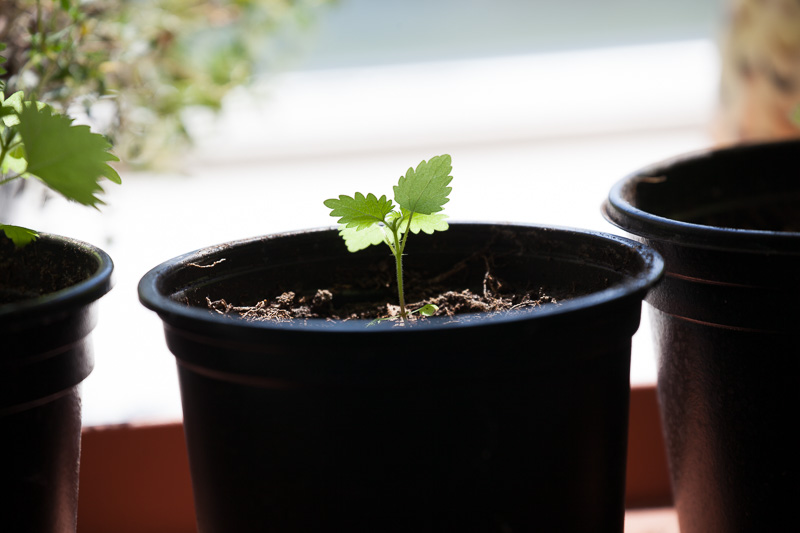One of the things I miss from my native Wirral is its miles of stunning hedgerows. You don’t see many hedgerows in West Yorkshire. Far too twee. It’s all drystone walls and barbed-wire fences over here.
For the past few years, though, whenever I’ve discovered hawthorn saplings growing where they didn’t belong in our garden, I’ve dug them up and replanted them alongside our rickety back fence. The idea is, as the saplings grow, they’ll begin to lend support to the fence. As a result, we now have a line of hawthorns of various sizes bounding our back lawn. The line is far too thin and sporadic to be described as a hedgerow, but that hasn’t prevented me from describing it in exactly that way.

One thing in particular that pleases me about our magnificent hedgerow is how quickly other plant species have begun to establish themselves amongst the hawthorns. Nettles, brambles, herb Robert, lady’s smock, goose grass. Not the sort of plants most people would welcome into their gardens, but the sort of plants you would expect to see in a proper hedgerow.
One species conspicuous by its absence from our hedgerow is the blackthorn. The Wirral is particularly well-served for blackthorns, from which we gather fiercely bitter sloes each autumn to make into sloe gin. Blackthorns aren’t particularly common in Hebden Bridge. So, last September, while making last year’s batch of gin from sloes gathered on the Wirral, I reserved a couple of dozen of the fruits, intending to try growing them into blackthorn saplings this spring. I read up on the subject and, having absorbed all manner of contradictory advice, decided to leave the sloes in the fridge over winter. In February, I planted them in pots and left them on our south-facing kitchen windowsill, near the Aga, hoping the warmth might con the sloes into thinking spring had arrived early.
Imagine my delight when, a few weeks later, minuscule green shoots began to emerge from the compost. I tended them diligently, taking great care to make sure the seedlings never dried out, turning their pots every couple of days so they didn’t get too bent to one side as they grew towards the light.
Imagine my disappointment, on the other hand, when, a couple of weeks ago, it finally dawned on me: my sloe saplings were beginning to look suspiciously like stinging nettles:

I’ve kept on watering my nettles, in the forlorn hope that a blackthorn shootlet or two might eventually rise out of the compost, but I’m not holding my breath.
As it happens, I’m rather fond of stinging nettles. I’m not sure what to do with these impostors. Perhaps I’ll plant them in my hedgerow.
Leave a Reply